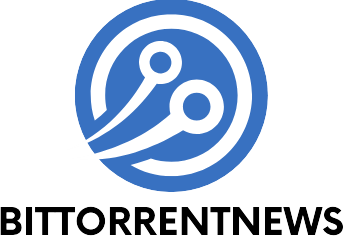Table of Contents
ToggleConnecting to a database might sound like a task only a tech wizard can tackle, but it’s easier than finding a needle in a haystack—if that needle were wearing a neon sign. Whether you’re a seasoned developer or just dipping your toes into the world of data, mastering this skill can unlock a treasure trove of insights and streamline your projects.
Understanding Database Connections
Connecting to a database enables users to interact with stored data efficiently. It streamlines data management and provides the ability to retrieve and manipulate information as needed.
What Is a Database Connection?
A database connection refers to the link between an application and the database management system. This connection allows applications to send queries and receive responses from the database. Resources like drivers or connection strings configure these connections. Common protocols, such as ODBC and JDBC, facilitate the communication process for different programming environments. The connection establishes a secure conduit, enabling data operations like insertion, deletion, and updates.
Importance of Database Connections
Database connections are essential for data accessibility and management. Efficient connections improve application performance and speed up transaction processing. They enhance data retrieval, allowing real-time insights and decision-making. By maintaining secure and reliable connections, organizations minimize risks associated with data breaches. Moreover, understanding connections aids in troubleshooting issues that arise during database interaction. Ultimately, they play a critical role in application functionality and user experience.
Prerequisites for Connection
Establishing a database connection requires some essential components. Understanding these prerequisites simplifies the process significantly.
Choosing the Right Database
Selecting the appropriate database depends on project requirements and data needs. Common options include relational databases like MySQL and PostgreSQL or NoSQL databases like MongoDB and Cassandra. Each type offers unique advantages, including data structure and scalability options. Developers must also consider factors such as ease of use and community support. These aspects influence performance and long-term viability.
Required Software and Tools
Necessary software tools streamline the connection process. Users typically need a database management system (DBMS) installed on their server or local machine. Additionally, specific drivers play a crucial role in enabling applications to communicate with the database. Examples of widely used drivers are ODBC for Windows and JDBC for Java applications. Developers should also use integrated development environments (IDEs) that support database connections to enhance productivity. Popular options in this category include Visual Studio and IntelliJ IDEA, which offer built-in features for database management and interaction.
Steps to Connect to a Database
Connecting to a database involves specific steps that ensure a successful interaction. These steps provide a comprehensive approach to effectively establish a connection.
Establishing a Connection String
A connection string is critical for linking an application to a database. It contains essential information, such as the server address, database name, user credentials, and the chosen protocol. For instance, a connection string for a MySQL database appears as follows:
Server=myServerAddress;Database=myDataBase;User Id=myUsername;Password=myPassword;
Using the correct format ensures the application can locate and authenticate access to the database. Developers must double-check the syntax to avoid connection errors, as even a minor mistake can prevent successful database interaction.
Using Programming Languages for Connection
Programming languages play a vital role in establishing database connections. Languages like Python, Java, and C# offer libraries and frameworks to facilitate connections. In Python, for example, one can utilize libraries such as mysql-connector-python or SQLAlchemy for seamless integration.
Java requires JDBC (Java Database Connectivity) for database access, enabling interactions with a variety of database systems. Meanwhile, C# often employs ADO.NET for connecting to databases, providing a structured way to handle database transactions. Selecting the appropriate language and library optimizes the connection process and increases application efficiency.
Connection Methods
Connecting to a database can utilize various methods, each catering to specific requirements and systems. Understanding these methods enhances overall database interaction efficiency.
JDBC and ODBC
Java Database Connectivity (JDBC) and Open Database Connectivity (ODBC) serve as essential interfaces for database connections. JDBC is primarily used for Java applications, allowing seamless interaction with various databases. ODBC, on the other hand, facilitates connectivity across multiple programming languages. Each protocol requires appropriate drivers for successful communication between applications and databases. For example, Java programs often use JDBC drivers specific to the target database, while ODBC supports multiple database types through a unified approach. Compatibility with different database management systems enhances user flexibility, optimizing data handling and retrieval processes.
Connection Pools
Connection pools streamline database connections, improving application performance significantly. A connection pool maintains a set of established database connections for reuse by multiple applications or users. By reusing existing connections, applications reduce the overhead associated with opening new database connections repeatedly. This practice minimizes latency, enhancing application responsiveness, especially in high-traffic environments. Implementing connection pooling effectively conserves database resources and improves management efficiency. Frameworks and libraries often offer built-in connection pooling features, ensuring developers can optimize database interactions without extensive configuration.
Troubleshooting Connection Issues
Connection issues can arise at any stage of database interaction. Identifying the root causes and implementing fixes ensures smooth communication between applications and databases.
Common Problems and Solutions
Connection failures occur for various reasons. Incorrect credentials often lead to authentication errors. Users must verify usernames and passwords for accuracy. Network issues may also disrupt connectivity; checking network status can help. Firewall settings might block access, so reviewing firewall rules is essential. Timeouts frequently happen when connections take too long to establish. Adjusting timeout settings can alleviate this issue. Outdated drivers or incompatible versions can prevent successful connections; ensuring the latest software is installed helps resolve this problem.
Best Practices for Connection Management
Managing database connections efficiently enhances application performance. Utilizing connection pooling allows applications to reuse existing connections instead of creating new ones, reducing overhead. Closing connections promptly after use prevents resource wastage. Monitoring active connections helps identify potential bottlenecks. Implementing error handling mechanisms ensures issues are logged and addressed quickly. Additionally, following security best practices, such as encrypting connections and using strong authentication, safeguards data during transmission. Regularly updating software and drivers keeps the application compatible with the database management system.
Conclusion
Mastering database connections opens up a world of possibilities for developers and data enthusiasts alike. By understanding the various types of databases and connection methods available, users can streamline their data management processes. Emphasizing best practices ensures not only efficient interactions but also enhances security and performance.
With the right tools and knowledge, anyone can establish a successful connection to a database. This skill not only boosts productivity but also empowers users to make informed decisions based on real-time data insights. As technology continues to evolve, staying updated on connection strategies will be vital for anyone looking to excel in the data-driven landscape.



